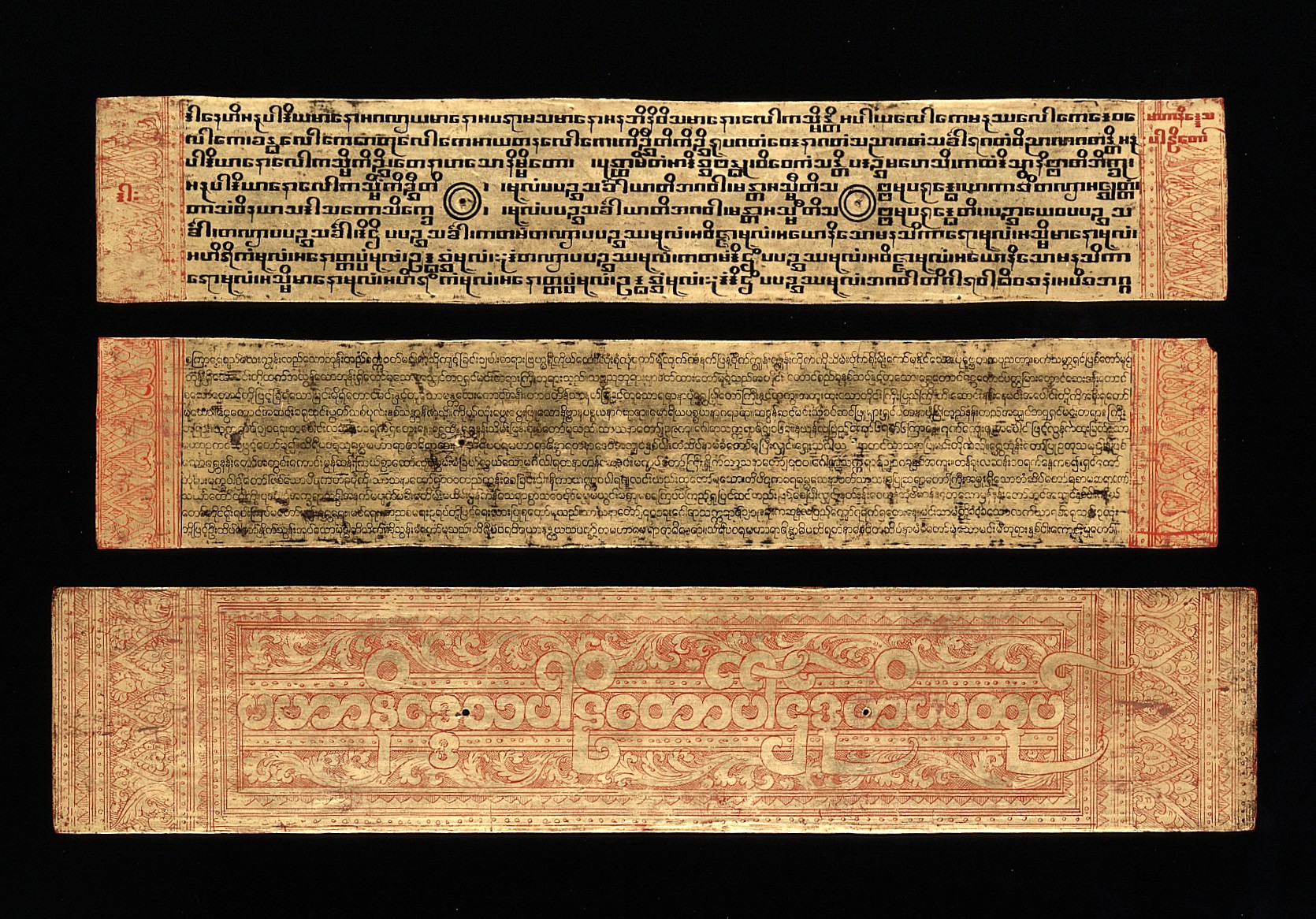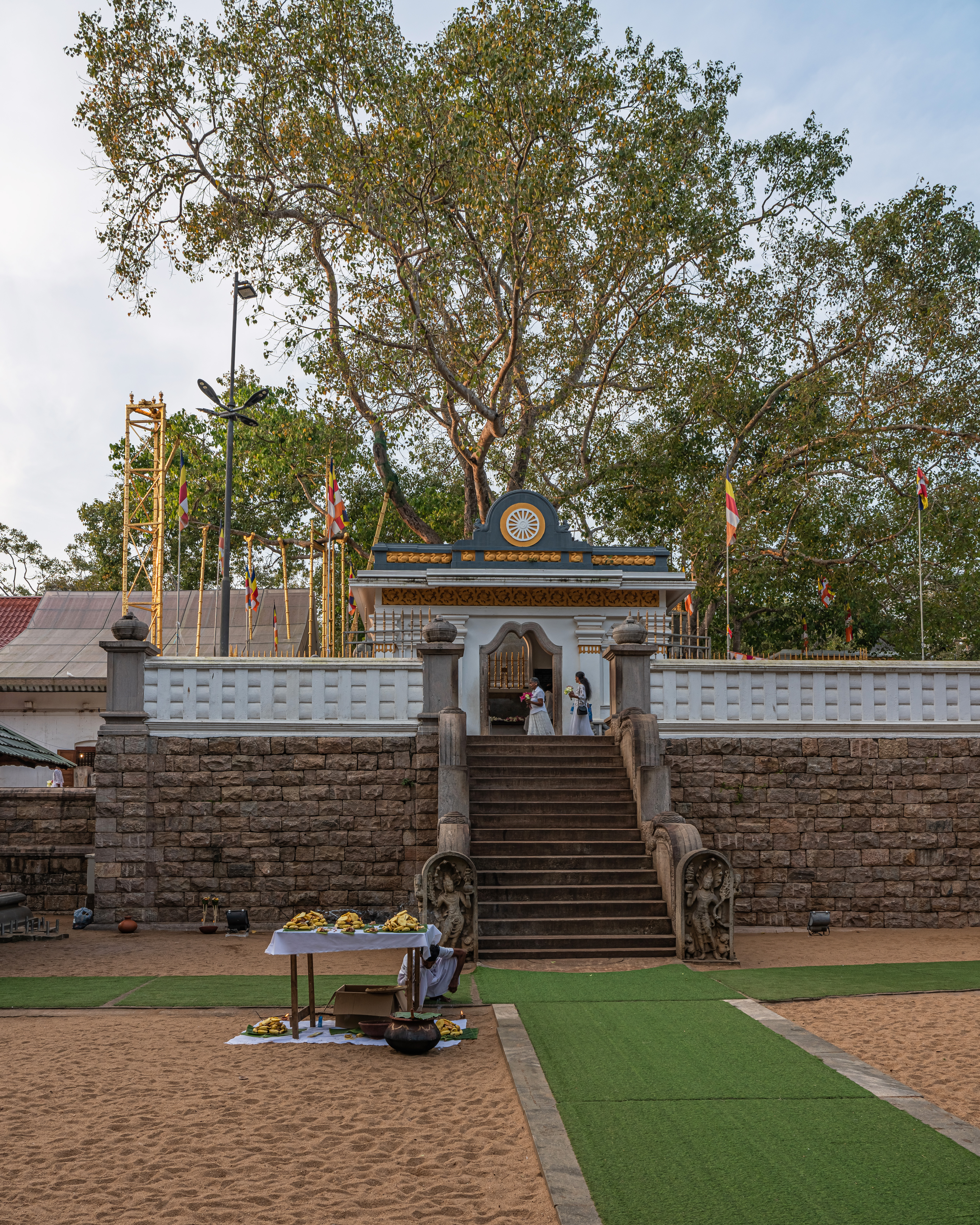|
Bodhivaṃsa
The ''Bodhi-Vamsa'', or Mahabodhivamsa, is a prose poem in elaborate Sanskritized Pali that recounts the story of the Bodhi tree of Bodh Gaya and Anuradhapura. It is attributed to a monk called Upatissa who lived during the reign of Mahinda IV of Sri Lanka, and believed to have been composed in the 10th Century AD. It is written in the kavya style. Contents The ''Mahabodhivamsa'' is composed primarily in prose, but includes verses at the end of each chapter, many of them originating from the Mahavamsa. Like the ''Mahavamsa'', the ''Mahabodhivamsa'' begins by recounting the recognition of Gautama Buddha by Dipankara Buddha and then proceeds to recount the life of Gautama Buddha and an account of the first three Buddhist Councils. It then describes the mission of Mahinda to bring Buddhism to Sri Lankain the 3rd century BCE, and the transplantation of the Bodhi tree and the creation of the '' bodhipuja'' ceremony that celebrates it. It consists of twelve chapters, and ends wit ... [...More Info...] [...Related Items...] OR: [Wikipedia] [Google] [Baidu] |
Sri Lanka
Sri Lanka, officially the Democratic Socialist Republic of Sri Lanka, also known historically as Ceylon, is an island country in South Asia. It lies in the Indian Ocean, southwest of the Bay of Bengal, separated from the Indian subcontinent, Indian peninsula by the Gulf of Mannar and the Palk Strait. It shares a maritime border with the Maldives in the southwest and India in the northwest. Sri Jayawardenepura Kotte is the legislative capital of Sri Lanka, while the largest city, Colombo, is the administrative and judicial capital which is the nation's political, financial and cultural centre. Kandy is the second-largest urban area and also the capital of the last native kingdom of Sri Lanka. The most spoken language Sinhala language, Sinhala, is spoken by the majority of the population (approximately 17 million). Tamil language, Tamil is also spoken by approximately five million people, making it the second most-spoken language in Sri Lanka. Sri Lanka has a population of appr ... [...More Info...] [...Related Items...] OR: [Wikipedia] [Google] [Baidu] |
Sanskrit
Sanskrit (; stem form ; nominal singular , ,) is a classical language belonging to the Indo-Aryan languages, Indo-Aryan branch of the Indo-European languages. It arose in northwest South Asia after its predecessor languages had Trans-cultural diffusion, diffused there from the northwest in the late Bronze Age#South Asia, Bronze Age. Sanskrit is the sacred language of Hinduism, the language of classical Hindu philosophy, and of historical texts of Buddhism and Jainism. It was a lingua franca, link language in ancient and medieval South Asia, and upon transmission of Hindu and Buddhist culture to Southeast Asia, East Asia and Central Asia in the early medieval era, it became a language of religion and high culture, and of the political elites in some of these regions. As a result, Sanskrit had a lasting effect on the languages of South Asia, Southeast Asia and East Asia, especially in their formal and learned vocabularies. Sanskrit generally connotes several Indo-Aryan languages# ... [...More Info...] [...Related Items...] OR: [Wikipedia] [Google] [Baidu] |
Buddhaghosa
Buddhaghosa was a 5th-century Sinhalese Theravādin Buddhist commentator, translator, and philosopher. He worked in the great monastery (''mahāvihāra'') at Anurādhapura, Sri Lanka and saw himself as being part of the Vibhajyavāda school and in the lineage of the Sinhalese ''mahāvihāra''. His best-known work is the ''Visuddhimagga'' ("Path of Purification"), a comprehensive summary of older Sinhala commentaries on the scriptural canon of the Theravāda school. According to Sarah Shaw, in Theravāda Buddhism this systematic work is "the principal text on the subject of meditation." The interpretations provided by Buddhaghosa have generally constituted the orthodox understanding of Theravādin scriptures since at least the 12th century CE. Buddhaghosa is generally recognized by both Western scholars and Theravādin Buddhists as the most important philosopher and commentator of the Theravāda school. Name The name ''Buddhaghosa'' means "Voice of the Buddha" (''Budd ... [...More Info...] [...Related Items...] OR: [Wikipedia] [Google] [Baidu] |
Pali Buddhist Texts
Pāli (, IAST: pāl̤i) is a classical Middle Indo-Aryan language of the Indian subcontinent. It is widely studied because it is the language of the Buddhist ''Pāli Canon'' or '' Tipiṭaka'' as well as the sacred language of '' Theravāda'' Buddhism. Pali was designated as a classical language by the Government of India on 3 October 2024. Origin and development Etymology The word 'Pali' is used as a name for the language of the Theravada canon. The word seems to have its origins in commentarial traditions, wherein the (in the sense of the line of original text quoted) was distinguished from the commentary or vernacular translation that followed it in the manuscript. K. R. Norman suggests that its emergence was based on a misunderstanding of the compound , with being interpreted as the name of a particular language. The name Pali does not appear in the canonical literature, and in commentary literature is sometimes substituted with , meaning a string or lineage. This n ... [...More Info...] [...Related Items...] OR: [Wikipedia] [Google] [Baidu] |
10th-century History Books
1 (one, unit, unity) is a number, numeral, and glyph. It is the first and smallest positive integer of the infinite sequence of natural numbers. This fundamental property has led to its unique uses in other fields, ranging from science to sports, where it commonly denotes the first, leading, or top thing in a group. 1 is the unit of counting or measurement, a determiner for singular nouns, and a gender-neutral pronoun. Historically, the representation of 1 evolved from ancient Sumerian and Babylonian symbols to the modern Arabic numeral. In mathematics, 1 is the multiplicative identity, meaning that any number multiplied by 1 equals the same number. 1 is by convention not considered a prime number. In digital technology, 1 represents the "on" state in binary code, the foundation of computing. Philosophically, 1 symbolizes the ultimate reality or source of existence in various traditions. In mathematics The number 1 is the first natural number after 0. Each natural numbe ... [...More Info...] [...Related Items...] OR: [Wikipedia] [Google] [Baidu] |
Sri Lankan Buddhist Texts
Shri (; , ) is a Sanskrit term denoting resplendence, wealth and prosperity, primarily used as an honorific. The word is widely used in South and Southeast Asian languages such as Assamese, Meitei ( Manipuri), Marathi, Malay (including Indonesian and Malaysian), Javanese, Balinese, Sundanese, Sinhalese, Thai, Tamil, Telugu, Odia, Assamese, Punjabi, Hindi, Bengali, Nepali, Malayalam, Kannada, Sanskrit, Pali, Khmer, and also among Philippine languages. It is usually transliterated as ''Sri'', ''Sree'', ''Shri'', ''Shiri'', ''Shree'', ''Si'', or ''Seri'' based on the local convention for transliteration. In Tamil it evolved to Tiru. The term is used in Indian subcontinent and Southeast Asia as a polite form of address equivalent to the English "Mr." in written and spoken language. "Shri" is also used as a title of veneration for deities or as honorific title for individuals. "Shri" is also an epithet for Hindu goddess Lakshmi, while a '' yantra'' or a mystica ... [...More Info...] [...Related Items...] OR: [Wikipedia] [Google] [Baidu] |
Buddhist Texts
Buddhist texts are religious texts that belong to, or are associated with, Buddhism and Schools of Buddhism, its traditions. There is no single textual collection for all of Buddhism. Instead, there are three main Buddhist Canons: the Pāli Canon of the Theravada, Theravāda tradition, the Chinese Buddhist canon, Chinese Buddhist Canon used in East Asian Buddhism, East Asian Buddhist tradition, and the Tibetan Buddhist canon, Tibetan Buddhist Canon used in Tibetan Buddhism, Indo-Tibetan Buddhism. The earliest Buddhist texts were not committed to writing until some centuries after the death of Gautama Buddha. The oldest surviving Buddhist manuscripts are the Gandhāran Buddhist texts, found in Pakistan and written in Gāndhārī language, Gāndhārī, they date from the first century BCE to the third century CE. The Early Buddhist texts, first Buddhist texts were initially passed on orally by Buddhist monasticism, Buddhist monastics, but were later written down and composed ... [...More Info...] [...Related Items...] OR: [Wikipedia] [Google] [Baidu] |
Jaya Sri Maha Bodhi
'' Jaya Sri Maha Bodhi Tree is a Ficus religiosa, sacred bo tree (''Ficus religiosa'') in Mahamewuna Garden in the historical city of Anuradhapura, Sri Lanka. It is believed to be a tree grown from a cutting of the southern branch from the historical sacred bo tree, Bodhi tree, Sri Maha Bodhi, which was destroyed during the time of Emperor Ashoka, at Bodh Gaya in India, under which Gautama Buddha, Siddhartha Gautama (Buddha) attained Bodhi, enlightenment. In 236 BC, the Buddhist nun Sanghamitta, Sangamitta Maha Theri, a daughter of Indian Ashoka, brought the tree cutting to Sri Lanka during the reign of Sinhalese Devanampiya Tissa of Anuradhapura, King Devanampiya Tissa.[1] At more than 2,300 years old, it is the oldest living human-planted tree in the world with a known planting date. The ''Mahāvaṃsa'', or the great chronicle of the Sinhalese, provides an elaborate account of the establishment of the Jaya Sri Maha Bodhi on the Island and the subsequent development of the sit ... [...More Info...] [...Related Items...] OR: [Wikipedia] [Google] [Baidu] |
Abhidhamma
The Theravada Abhidhamma tradition, also known as the Abhidhamma Method, refers to a scholastic systematization of the Theravāda school's understanding of the highest Buddhist teachings ( Abhidhamma). These teachings are traditionally believed to have been taught by the Buddha, though modern scholars date the texts of the ''Abhidhamma Piṭaka'' to the 3rd century BCE. Theravāda traditionally sees itself as the ''vibhajjavāda'' ("the teaching of analysis"), which reflects the analytical (''vibhajjati'') method used by the Buddha and early Buddhists to investigate the nature of the person and other phenomena. According to Bhikkhu Bodhi, a modern Theravāda scholar, the Abhidhamma is "simultaneously a philosophy, a psychology and an ethics, all integrated into the framework of a program for liberation."Bodhi (2000), p. 3. There are different textual layers of Abhidhamma literature. The earliest Abhidhamma works are found in the Pali Canon. Then there are exegetical works whi ... [...More Info...] [...Related Items...] OR: [Wikipedia] [Google] [Baidu] |
Gunapala Piyasena Malalasekera
Gunapala Piyasena Malalasekera, OBE, JP, (8 November 1899 – 23 April 1973) was a Sri Lankan academic, scholar and diplomat best known for his Malalasekara English-Sinhala Dictionary. He was Ceylon's first Ambassador to the Soviet Union, Ceylon's High Commissioner to Canada, the United Kingdom and Ceylon's Permanent Representative to the United Nations in New York. He was the Professor Emeritus in Pali and Dean of the Faculty of Oriental Studies. Early life and education Born on 8 November 1899 at Malamulla, Panadura as George Pieris Malalasekera. His father was a well-known Ayurvedic (native medicine) physician, Ayur. Dr. M. S. Pieris Malalasekera. Malalasekera was educated at St. John's College Panadura, (now the St. John's College National School). It was a leading school in the English medium in Panadura under the head master Cyril Jansz, a reputed educationist of the colonial era. After receiving his education in that school from 1907–17, he joined the Ceylo ... [...More Info...] [...Related Items...] OR: [Wikipedia] [Google] [Baidu] |






